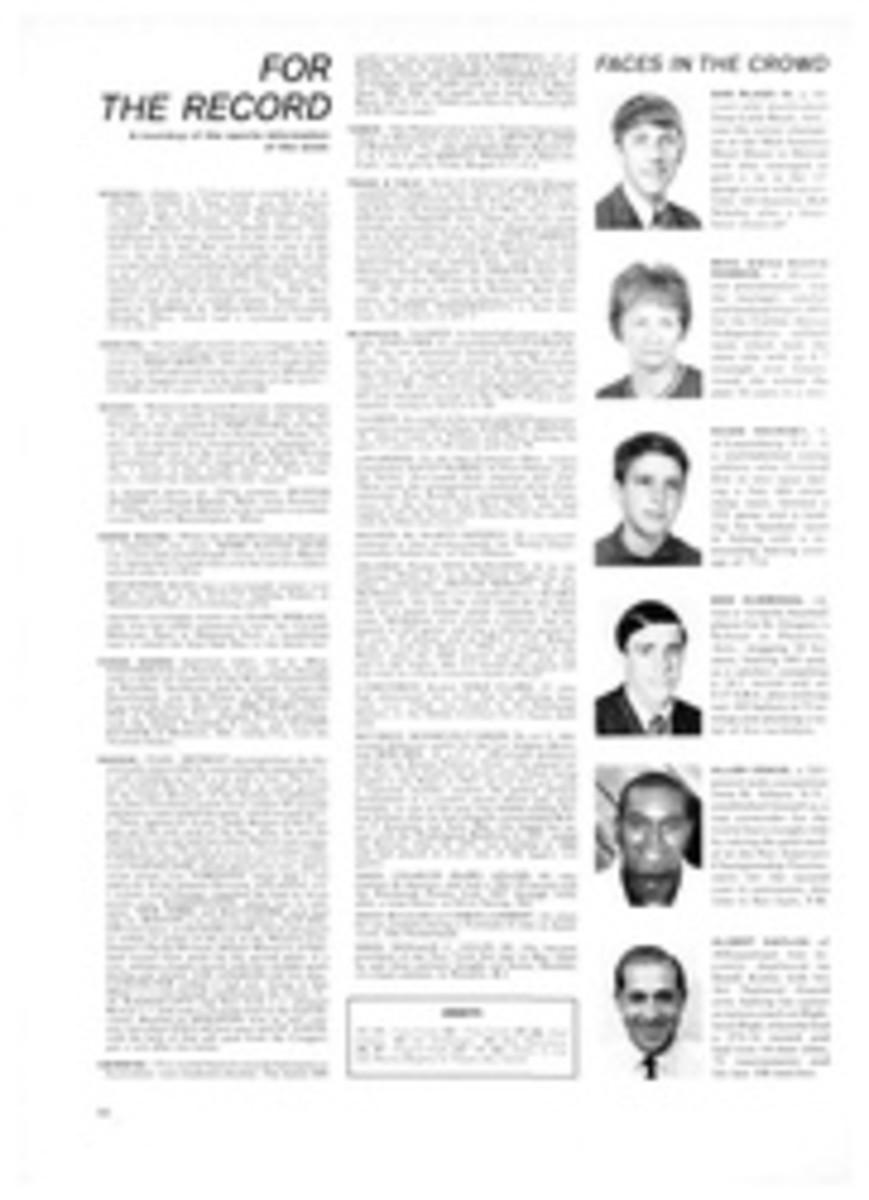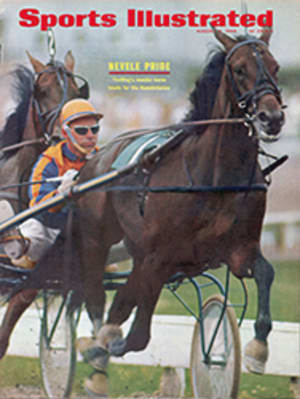
When All Goldfield Was Aglitter
A sign along Highway 95 in Goldfield, Nev. warns motorists to slow down to 25 mph. One can't help wondering why. In Goldfield today the wind cries past lifeless buildings. A sign on a grocery store sways on a rusted rod, creating the sound effect always heard in westerns when the cowboy rides apprehensively into the ghost town. The street is empty, except for a thin black dog moving slowly against the wind. The dog stops in front of the vacant four-story, brick Goldfield Hotel. He raises his front paws to a window ledge and peers through the dusty glass at the dining room, where cloths and napkins are still on the tables and the glassware is in place as if awaiting the dinner-hour crowd.
Goldfield is not quite a ghost town yet; it is still the county seat of Esmeralda County, and inside its impressive greenish-yellow courthouse a few functionaries of government labor at their desks. But the high-ceilinged corridors are as empty as the town's streets, and there are no prisoners in the steel-barred, three-tiered jail. Without the courthouse and its occupants, Goldfield would be left to the wind, the winter snows and the burning sun of summer. And then there would be no one to see and admire the handsome bronze plaque alongside the courthouse—a plaque decorated with two boxing gloves and calling attention to the fact that Goldfield was the site of a famed prizefight that took place in 1906 and lasted for 42 rounds.
Goldfield was less than three years old then. It had been called Grandpa in 1902 when Billy Marsh and Harry Stimler staked the first gold claim on the barren hillside. But when jewelry rock ran $50 to $75 a pound the rush was on, and the boomtown of Goldfield was born. Miners flocked to the new bonanza, and with them came bright opportunists to provide ways of disposing of their gold. One of these was a young fellow named Tex Rickard, fresh out of Seattle and the Alaska gold camps. Tex soon made himself president of the Gold-field Athletic Club, a profitable saloon and gambling house that was to make Goldfield, for a brief hour, the sporting capital of the world. The occasion was a fight for the lightweight championship of the world, between the Negro title-holder Joe Gans and a Danish challenger named Battling Nelson.
Three weeks before the fight on September 3 both fighters and their entourages moved into town to set up training camps, and the transcontinental telegraph lines began to crackle with the static of their prefight bickerings. Because of some shady dealings in the past, rumors were rife that Gans had been offered $25,000 to take a dive, but he denied it indignantly. "Six months ago," he told the newsmen, "I gave my word to Mr. Eddie Graney [one of his advisers] that I would never fight another crooked fight. I wish people would give me a little credit for honest intentions this time."
Despite the persistent stories of the fix, Gans was the betting favorite. John L. Sullivan picked him to win in eight rounds. Bob Fitzsimmons told friends at the Metropole in New York that Gans was a sure winner.
By fight day everybody in America knew about Goldfield, the fabulous mining camp where $7 million had been taken from a dozen mines in less than three years. Celebrities flocked into town for the fight, including Broadway showgirl Nan Paterson, just out of jail for shooting Caesar Young. Dressed, in the words of one news writer, "beyond appreciation in the best finery in the land," she strolled the dusty mining-camp streets, her face shaded by a hat of ostrich plumes.
At fight time there were 8,000 fans, 200 of them women, seated in the Gold-field arena, breathing the clear, dry air under the hot sun. In every major city throngs stood outside newspaper offices waiting for the round-by-round bulletins to be posted. The first bulletin announced that Gans had weighed in at 131½ pounds, Nelson at 133.
For the first 15 rounds the pace was fast. Gans, the veteran, the dancing master, moved in and out quick as a flash, piling up points. Slim and graceful, he had the longer reach; but Nelson, younger and aggressive, delivered bone-crushing thrusts as he swept like a squat tornado toward the Baltimore Negro.
One of Nelson's favorite tricks was to get in a clinch and send a low blow to his opponent's groin. This began to annoy the remarkably orderly fight crowd, and the Negro became more and more the favorite. One of Gans's punches knocked Nelson through the ropes. Gans picked up his opponent and helped him back into the ring. As Gans stood with hands down waiting for Nelson to steady himself, the Dane unleashed a vicious blow to Gans's stomach. The crowd hissed.
In the 33rd round Gans landed a hard right-hand blow on the side of Nelson's face. A bone in the hand snapped and Gans stepped back with an expression of pain, but since the pain caused him to limp about as if he had stepped on his foot, no one, including Nelson, realized that Gans's hand was broken and useless. By that time, however, Nelson was in no great shape himself. Eight rounds later the two fighters were in the usual clinch when Nelson drew back his right hand and hit Gans a solid blow in the crotch. For once the referee noticed. Gans sank to his knees, rolled over on his back and the ref awarded the fight to him on a foul. The crowd cheered.
Commenting on the decision, an Associated Press reporter wrote: "Nelson is probably the most unpopular man that ever visited Goldfield. There is not a dissenting voice over the decision."
When Tex Rickard and his associates finished counting the receipts they found that the $90,000 gate had topped all other contests in ring history. The previous high had been the $70,000 paid through the ticket windows for the Jeffries-Sharkey fight at Coney Island in 1899.
Goldfield, the most exciting mining camp in the history of the West, went back to digging gold. The population swelled to 30,000 and a mining production of $11 million in 1910. Then the mines petered out. Fires claimed most of the town. All that is left now is the courthouse, the empty Goldfield Hotel, a scattering of weary frame buildings and that shining monument that proudly tells the few who stop for a moment on Highway 95 that here was the site of a famed prizefight.

